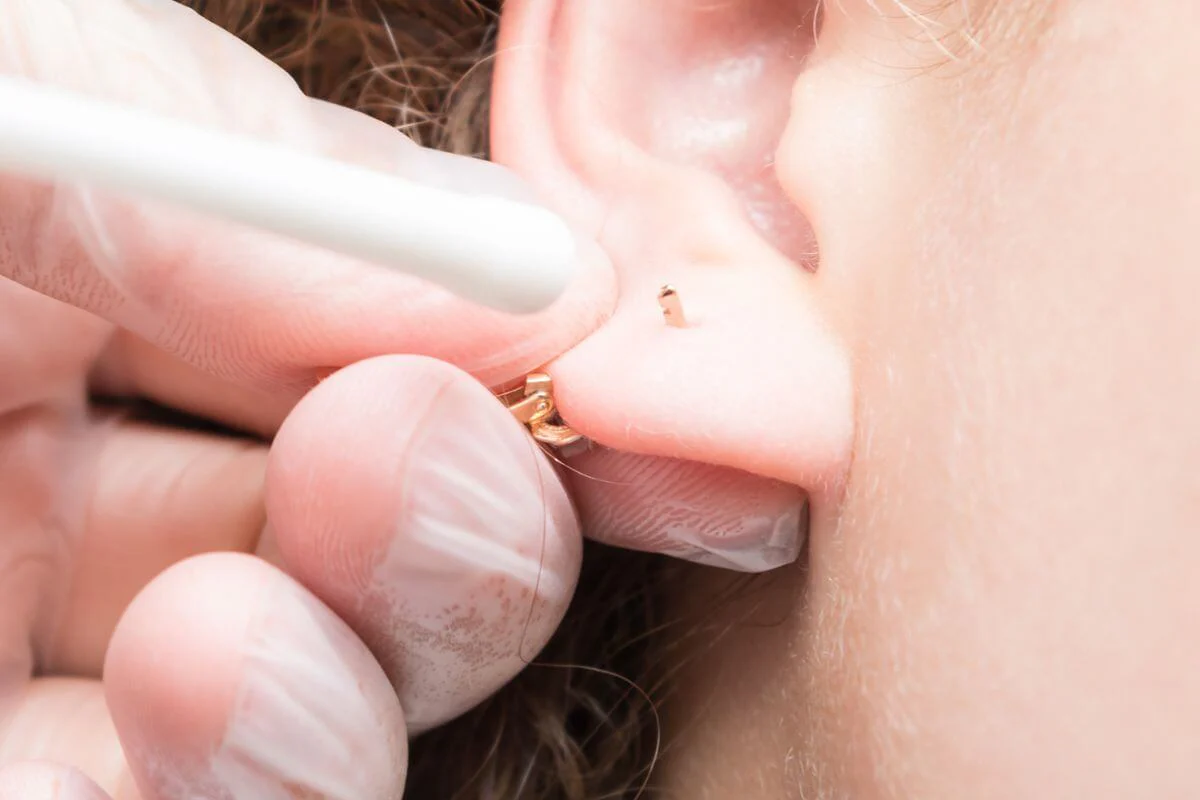
08 Jul Ear Piercing Tips for Choosing Jewelry Materials
When it comes to ear piercing in dubai, selecting the right jewelry materials is crucial for both style and safety. Here’s a guide to help you navigate through the options and make an informed choice.
1. Sterling Silver
Sterling silver is a popular choice for ear piercings due to its affordability and aesthetic appeal. It’s a silver alloy that contains 92.5% silver and 7.5% other metals, usually copper. This composition gives it strength while retaining the lustrous silver appearance. However, some people with sensitive skin may experience reactions to the copper content, so it’s essential to monitor your skin’s reaction.
2. Gold
Gold jewelry is timeless and suitable for those with sensitive skin. Pure gold (24 karats) is hypoallergenic, but it’s too soft for everyday wear, so it’s often alloyed with other metals like nickel or copper to increase durability. If you have allergies, consider 18 karat or higher gold, which has lower alloy content and less risk of irritation.
3.Cost Considerations
The ear piercing cost in Dubai can vary depending on the studio or clinic you choose, the type of piercing (earlobe vs. cartilage), and the quality of jewelry used. While it’s tempting to opt for the cheapest option, investing in a reputable studio ensures a safer and more pleasant experience, reducing the risk of complications.
4. Titanium
Titanium is an excellent choice for ear piercings because it’s hypoallergenic, lightweight, and durable. It’s often used in medical implants due to its biocompatibility, making it suitable for sensitive skin types and reducing the risk of allergic reactions or infections. Titanium jewelry comes in various finishes and can be anodized to create vibrant colors without compromising its hypoallergenic properties.
5. Surgical Stainless Steel
Surgical stainless steel is another popular choice for ear piercings due to its affordability, durability, and resistance to corrosion. It’s important to ensure that the steel used is specifically designated as “surgical” or “implant-grade,” as these are less likely to cause allergic reactions compared to lower-quality stainless steel, which may contain nickel.
6.Before and After Results
Before getting an ear piercing, clients often research ear piercing before and after results to visualize the potential outcome and choose the best style for their preferences.
7. Platinum
Platinum is a luxurious and hypoallergenic metal, making it an excellent choice for those with sensitive skin. It’s durable, resistant to tarnishing, and highly valued for its purity. However, platinum jewelry tends to be more expensive than other metals due to its rarity and density.
Conclusion
Choosing the right jewelry material for your ear piercing involves considering factors such as skin sensitivity, durability, and personal style. Whether you opt for sterling silver, gold, titanium, surgical stainless steel, or platinum, each material offers unique benefits to enhance your piercing experience. Remember to consult with your piercer for personalized recommendations based on your skin type and lifestyle.


No Comments